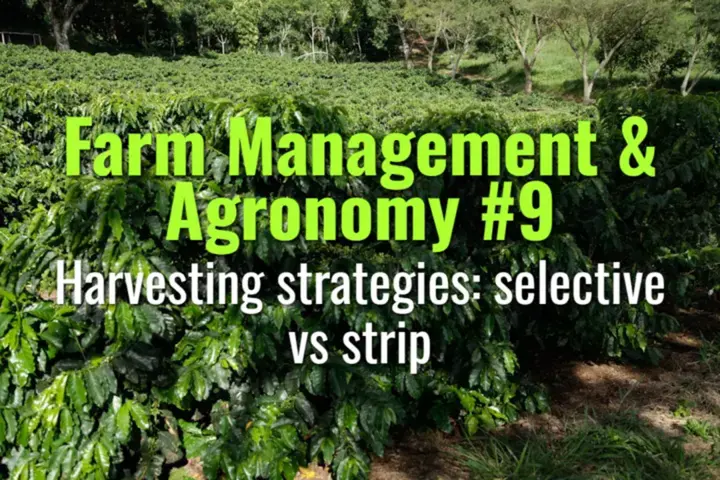Harvesting strategies: selective vs strip
This topic explains the two main coffee harvesting strategies—selective picking and strip harvesting—highlighting their methods, advantages, disadvantages, and impact on quality and yield.
- Coffee Basics Nerds
- 2 min read
Article 9 of 12 in Farm Management & Agronomy/

Selective Picking
- Method: Only ripe, red cherries are picked by hand.
- Advantages:
- Highest quality—ripe cherries produce uniform, sweet, and complex cups.
- Reduces defects from unripe (sour/astringent) or overripe (fermented) cherries.
- Preferred in specialty coffee production.
- Disadvantages:
- Labor-intensive and costly.
- Requires multiple passes through the farm as cherries ripen unevenly.
- Slower harvest speed.
Strip Harvesting
- Method: All cherries (ripe and unripe) are stripped off branches at once, either manually or mechanically.
- Advantages:
- Faster, cheaper, and less labor-intensive.
- Suited to large farms and regions with labor shortages.
- Common in Brazil with mechanized harvesters.
- Disadvantages:
- Lower quality—mix of ripe, unripe, and overripe cherries.
- Requires post-harvest sorting to separate defects.
- More stress on plants from rough handling.
Mechanical vs Manual Harvesting
- Manual strip picking: Done by hand, faster than selective picking, but quality still mixed.
- Mechanical harvesters: Efficient for flat terrains (e.g., Brazil), drastically reducing labor needs but unsuitable for steep, mountainous regions.
Impact on Quality & Market
- Selective picking: Delivers specialty-grade lots, fetches higher prices.
- Strip harvesting: Suited for commodity-grade coffee, where volume outweighs quality.
- Sorting and processing methods can partly mitigate strip harvesting defects, but not fully.
Choosing a Strategy
- Specialty farms: Favor selective picking despite costs, aiming for premium prices.
- Large-scale commercial farms: Favor strip harvesting to maximize efficiency.
- Hybrid approaches: Some farms combine both—selective picking for premium lots, strip harvesting for bulk.
Lasting Importance
Harvesting strategy is a critical determinant of cup quality and profitability. Selective picking preserves terroir expression and flavor, while strip harvesting maximizes efficiency. The choice reflects farm size, labor availability, and market orientation.
You might also like:
- Tags:
- Lasting Importance
- Specialty Coffee
- Cup Quality
- Specialty Grade
- Coffee Production
- Labor Intensive
- Post Harvest
- Terroir Expression
- Large Scale
- Processing Methods
- Grade Coffee
- Selective Picking
- Quality Market
- Ripe Cherries
- Higher Prices
- Premium Prices
- Grade Lots
- Premium Lots
- Overripe Cherries
- Unripe Overripe